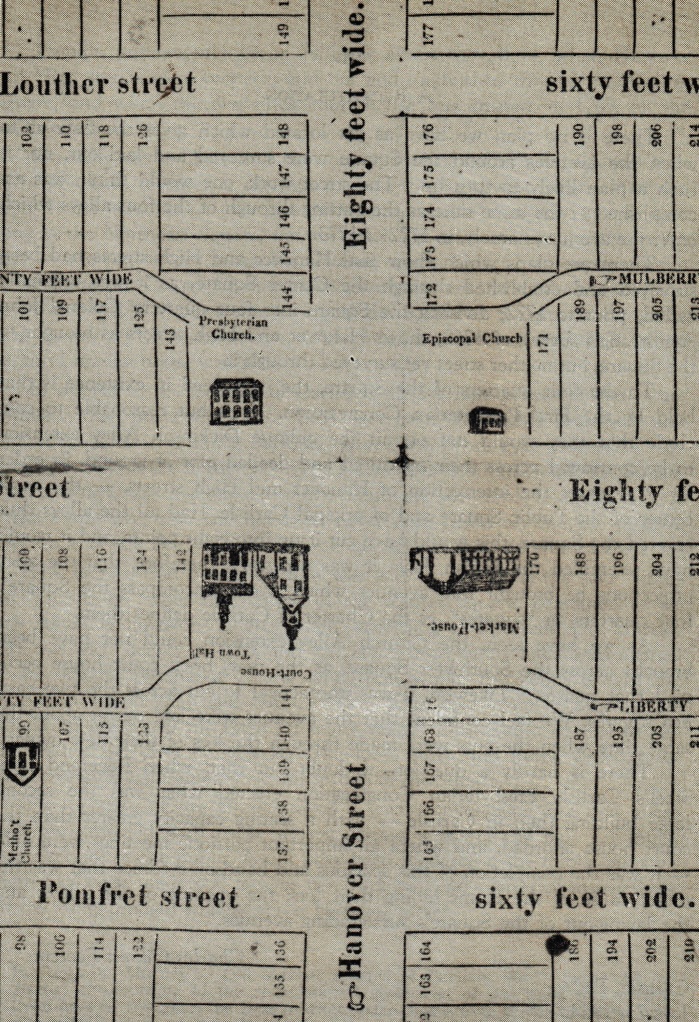Fronting on Church Avenue, adjoining St. John’s Episcopal Church on the Square, the eight brick houses that make up Carlisle’s Irvine Row are the rare survivors of an intact nineteenth-century streetscape. They stand on Lot #171 in the original plan of Carlisle. Each town lot was 60’x 240,’ but the lots fronting on the Square, as Lot #171 did, were shorter and reduced in size when alleys to the Public Square were cut through about 1772 or 1773.1
The first six of the eight two-story brick houses of the Row were built by surveyor John Harper, Esq.3 between 1832 and 1833. They housed both residences and businesses like C.E.R. Davis’s chair and cabinet shop at Nos. 4 & 7 Harper’s Row in 1834,4 and James Guthrie’s watch and silversmith shop in the 1840s.5 In 1835, tax records show that John Harper was assessed for one stone house (which fronted on East High Street) and six brick houses. Two additional brick houses had been built by 1843 when a deed described the property as “having thereon erected a large two-story stone house and eight brick houses called “Harper’s Row.” 6 In July 1843, Sheriff Paul Martin sold the property to Carlisle Bank for $10,000 to satisfy Harper’s creditors.7 Carlisle Bank is shown as the owner of the property on an 1850 plan of Carlisle.8
After Robert Irvine purchased the property for $10,000 from Carlisle Bank on April 1, 1850,9 Harper’s Row gradually began to be called Irvine Row. By searching nineteenth and twentieth-century business directories, such as Boyd’s Cumberland County Directory of Carlisle for 1882/1883, we learn the identities of some of the Row’s occupants then such as Susan McFeely, a tailoress, and Widow Margaret Deemer living at No. 9 Irvine Row; John H. Osborn, a travelling salesman residing at No. 4 Irvine Row; while Edgar L. Shyrock, Justice of the Peace, had his home and his office at No. 3 Irvine Row.
By the turn of the century Justice Shyrock had died, and his home and office at No. 3 Irvine Row was occupied by Justice of the Peace John Martin and his wife. Other residents of the houses on Irvine Row in 190010 included a dressmaker, a barber, a tailor, two nurses, and a seamstress, while John Irvin, the landlord, lived at No. 1. Residents would come and go for the next one hundred years, and their makeup would change, but when the 21st century dawned, the brick buildings on Irvine Row stood, and stand, as a reminder of Carlisle’s architectural heritage.
